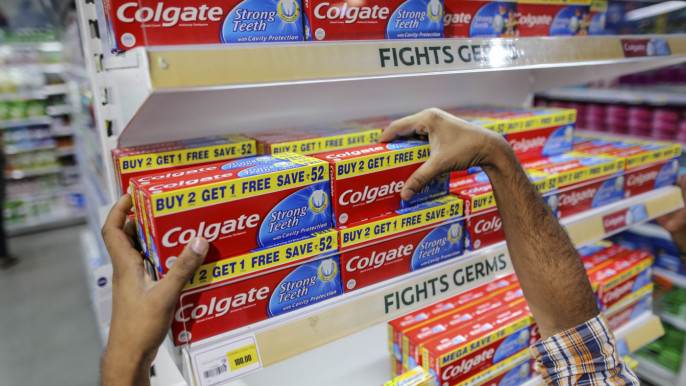
India Inc.’s profits won't survive costs, Covid

Lately, India has had very little to smile about. Something that Colgate-Palmolive Co.'s tepid growth in the world's pandemic epicenter amply demonstrates. The toothpaste maker's results this week offer a fresh look at a puzzle: the Indian stock market's apparent disregard for the country's worst humanitarian disaster in almost 75 years.
Scientists are forecasting 1.2 million deaths by end-August, hospitals are running out of beds and oxygen, and bodies are being dumped in the Ganges river, yet the Nifty 50 index is trading at a price-to-earnings ratio of 31. Even after softening somewhat since February, valuations are still rich. In the Asia-Pacific region, only Australia, New Zealand and Singapore are more expensive.
Colgate offers some shiny clues to the mystery. For the full year, the U.S. multinational's India unit recorded a little over 7% jump in net sales, but since that came atop a 1.2% increase in the previous 12 months, the two-year average works out to less than 5%. This is a company that only once expanded annual revenue by less than 13% in the nine years before 2015. But then came the challenge to its dominance from a yoga guru and his homegrown ayurveda company, followed by Prime Minister Narendra Modi's bizarre ban on 86% of cash in 2016, a banking crisis, a brutal economic slowdown, and finally two waves of Covid-19. Colgate hasn't once managed double-digit growth in the last six years under Modi.
Then there's this surprise: Mumbai-listed unit Colgate-Palmolive India Ltd.'s margin. Earnings before interest, taxes, depreciation and amortization in the March quarter rose more than 8 percentage points to nearly 33%. How does a firm that squeezes some chemicals into tubes pass on the pressure of higher commodity prices to consumers amid a raging pandemic?
According to economists, this shouldn't be happening. Wholesale prices in India, a proxy for cost buildup, surged 10.5% last month, the most in 11 years. Consumer price inflation, meanwhile, slowed to 4.3% from 5.5% in March. Leaving aside the differences in the composition of the two indexes, this divergence could be "an early indicator of margin pressures ahead as companies find it difficult to pass on higher raw material costs due to weak demand," Jay Shankar, an economist at InCred Capital in Mumbai, wrote in a note to clients.
Sure enough, analysts at brokerage Motilal Oswal don't believe that Colgate India's record profit margin — achieved by slashing advertising, manpower and other costs — will last. Commodity inflation will eventually make a dent.
Will it? I plotted the change, from a year earlier, in the company's margins against a measure of price pressure: the annual change in the difference between wholesale and consumer price inflation. A higher number indicates that costs are mounting, but in a slow-income-growth environment — such as the pandemic — firms struggle to pass them on. Profitability suffers.
This logic used to hold. Until 2018, margin expansion and price pressures were negatively correlated, but since then they are more likely to move in lockstep. And this isn't true just for Colgate. Unilever Plc's Indian unit, the country's largest consumer goods business, tries hard to not behave like a commodity processor. Its margins respond less to price pressures. But where the two once moved in opposite directions, they're now more likely to follow each other.
One interpretation of this unlikely convergence is that the pandemic has changed habits. Shopping in a store, buyers might put smaller-sized toothpastes in their basket. Buying online during last year's national lockdown, they might have preferred larger quantities to avoid ordering too frequently. The bigger the pack, the higher the producer's margin.
Editor & Publisher: S. M. Mesbah Uddin
Published by the Editor from House-45,
Road-3, Section-12, Pallabi, Mirpur
Dhaka-1216, Bangladesh
Call: +01713180024 & 0167 538 3357
News & Commercial Office :
Phone: 096 9612 7234 & 096 1175 5298
e-mail: financialpostbd@gmail.com
HAC & Marketing (Advertisement)
Call: 01616 521 297
e-mail: tdfpad@gmail.com